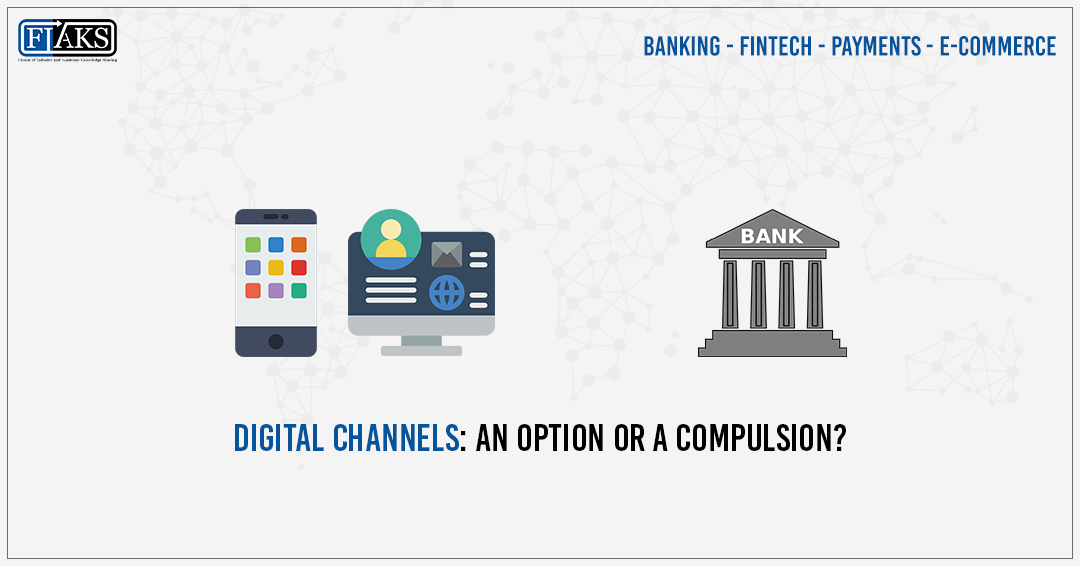Several Founders, Co-Founders, CXO Bankers, CXO Fintech professional & people who participated in the ePanel discussions:
Branch Banking vs Digital Banking has been the most debatable topic in the banking industry. Branch banking which is a traditional mode of banking wherein all the banking activities are carried out through branch office physically whereas on the other hand Digital banking which is sheer digitization of all traditional banking activities which since ages customers could avail of only by physically visiting the bank branch office.
Simple working aspects of Branch Banking:
- Branch Banks offer face to face customer service.
- All the banking activities such as accepting deposits, advancing loans, fund transfers and so on can be availed of by customers by visiting the branch office of the bank.
- You have to fill in application forms, submit required KYC documents physically.
- Banks provide debit card, credit card facilities, demand draft by charging a particular amount for it.
- Cash withdrawals and deposits can be done through a branch or ATM through cheques, ATM cards.
Why do people prefer Branch Banking?
- Convenient for those section of people who are not techno-savvy or digital illiterate.
- Absence of cyberattack issue.
- It helps to build up public confidence and trust.
- It helps create employment opportunity.
- There is reduced risk of confidential information to be leaked.
How does Digital Banking work?
- Digital Banking enables the user to access all the banking facilities online through mobile phones, laptops, etc
- It does not involve filling of any application forms on paper, every transaction is processed online and all account-related data is also stored online.
- Funds can be transferred electronically from one bank account to another
Virtual Banking: An aspect of Digital Banking
Virtual Banking enables you to access banking and related services online without physically visiting the bank branch. Any financial institution that provides essential banking services online is termed as a virtual bank. Customer are able to pay their bills online, check account details, secure loans, make cash withdrawals and deposits anytime according to their convenience. Some examples of virtual banking include ATM services, electronic clearing service scheme, electronic fund transfer scheme, RTGS, computerized settlement of clearing transactions, etc.
Following are some major reasons which can drive people to opt for digital banking:
- Customers can easily access their account anywhere anytime.
- It’s a digital revolution wherein transactions are processed within seconds.
- 24/7 availability which increases convenience and avoids long queues in banks.
- Electronic fund transfers
- Paperless transactions
The pivotal question raised by FIAKS community member was – Why is Digital forced on to the customers by the banks?
With the increase in the cyberattack, branch banking does have a great future in spite of various reports that are being published.
Here are some insights of members about Branch banking:
- Branch banking is the expensive but the right strategy to tap the average middle class with minimum relationship value of USD 10,000.
- Branch banking is looked down upon as most expensive form by most of the consumer banking heads. But it’s the most trusted channel compared to any other mode (ATM, Internet or Mobile)
- Channels are always seen from the cost perspective.
One of the members wondered why banks are willing to spend millions of dollars in promoting products that customers don’t want and rather invest in channels that customer want and trust. It seems banks are in a race to get more PR coverage and product launches are done for appraisal rather than serving the customer.
One of the members opines that few products are getting pushed in the name of innovation. Sometimes these start-ups are VC funded. The regulator needs to audit and publish details on various products being launched by the banks in terms of usage/registration as against total money spent on each product. How useful it was for the bank.? The regulator should blacklist products which have failed with multiple banks. It’s a waste of public money in the name of innovation which otherwise can be used to strengthen channels customer want.
Register and Read the entire discussions

